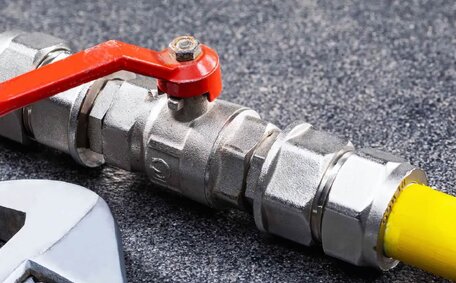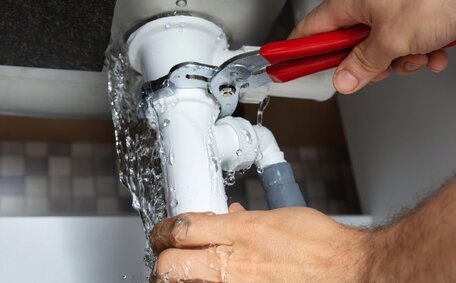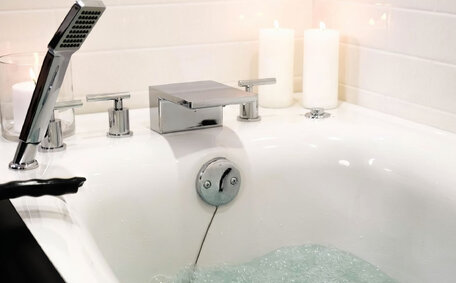Introduction to Gas Line Extensions
Extending your home’s gas infrastructure for connections to a propane tank or transitioning from electric to gas appliances can enhance energy efficiency. Whether you’re planning to fuel appliances like a new natural gas water heater or a gas stove, or convert electric units to gas in your home, extending the new line is a crucial step.
- Where natural gas is available, appliances such as your grill and gas hot water systems are typically more cost-efficient than their electric counterparts. Cooking and heating water with natural gas often results in lower long-term costs.
- Many gas appliances with pilot lights provide quicker and more uniform heating compared to electric models.
- A new gas line, typically at about $25 per linear metre, may add significant value to your home when connected to additional appliances.
However, it’s essential to coordinate with your energy retailer and adhere to building codes for a legal and safe gas line installation, in addition to considering installation costs. Choosing the right materials, making precise sizing calculations, and securing the necessary permits for a professional service line are crucial for a secure and reliable connection, all of which influence installation costs.
This guide covers the setup of new gas lines from the main to your house, outlining system capacity, necessary equipment, permits, and when to seek professional guidance. With thorough preparation and foresight, you’ll need to gauge whether extending your natural gas line aligns with your home improvement aspirations.
Checking Your Current Gas Line Capacity
Before you install new gas line connections to your additional appliances through the gas valve, it’s vital to evaluate your home’s current gas capacity. Understanding your gas line, meter, and pipe dimensions is crucial for assessing costs and ensuring efficient gas flow to manage the system’s capacity.
Consult a licensed gas fitter for an accurate assessment of the installation costs for your home’s gas infrastructure. These professionals can gauge installation and usage costs by taking pressure and volume measurements. The sizing of gas lines for peak demand times is crucial as it influences cost considerations when multiple appliances are in use at once.
Should your existing gas infrastructure lack capacity for additional appliances, it might become necessary to add gas line installed to enhance your property. Professionals, including Mosman Plumbing, provide free estimates and can determine if larger pipes or a main gas line upgrade is necessary.
Prompt gas line installation averts future issues, ensuring a secure and effective connection for your appliances. Extending your new gas line installation that is already at max capacity runs the risk of poor appliance performance and hazardous conditions like carbon monoxide poisoning.
When in doubt about your existing gas line, reach out to the professionals. Our team would be happy to evaluate your current gas line capacity and advise on any upgrades needed to facilitate a safe, seamless supply of gas your home requires.
Safety Precautions When Working with Gas Lines
Installing flexible gas line extensions and modifications carries serious safety risks if not handled by professionals. Ensure only qualified, licensed professionals with the right materials and equipment undertake work on your gas system. Understanding key safety precautions contractors must observe during gas line installations can be beneficial:
- You must turn off the gas at the main valve to secure the integrity of the gas hose and line involved in your gas-related endeavours. This precaution isolates the house from the gas supply to control operational costs.
- Additionally, it’s vital to shut off all individual appliance valves before undertaking any work on the lines, using preventive measures such as applying teflon tape when reassembling joints.
- The area must be well ventilated, considering that proper ventilation systems can add an expense, likely more than 20 per linear foot, to prevent gas buildup.
- Technicians wear gloves, goggles, hard hats, and fire-resistant clothing when installing steel gas infrastructure.
- Only wrench types approved for gas fittings should be used to avoid sparks.
- A gas detector is used to check for leaks before bringing gas back into the system.
- Extended lines, as part of any extend gas project, must undergo a pressure test with an inert gas like nitrogen before activation.
- All work mandates obtaining permits and undergoing inspections by your local building department.
- Warning signs are posted to indicate local gas line work is in progress.
- Fire extinguishers and first aid kits must be kept on hand.
There should be no tolerance for gas leaks or the need to repair gas line work can be extremely hazardous. If you smell even a small amount of gas near your main gas line, evacuate the building and contact the fire department immediately. Never take risks when it comes to gas line safety.
Our fully certified technicians are equipped to manage your project, working with the utility company and adhering to strict safety measures to install the gas line your new home requires, thus ensuring a robust supply. We want to keep your home and family safe while increasing the gas capacity and facilitating new connections requests for your dwelling. Contact our team today to learn more about our expert gas installation service and extension process.
Locating Existing Gas Lines
Accurately locating any existing gas pipes in and around your home is crucial before extending or modifying gas lines. Damaging a gas line during DIY projects can cause dangerous leaks.
Here are some tips for tracing your gas lines to ensure safe location practices:
- Contacting the gas company can lead to having your gas lines marked by technicians, highlighting their paths, typically at no cost.
- Identify where your gas access points might be, such as areas near the meter installation, appliance hookups, and exhaust vents.
- Advanced detectors are highly effective in identifying the precise location of underground gas pipes.
- Review your original building plans if available, which may illustrate the placement of your pipes network.
- Areas of dead vegetation may signal the presence of underground gas pipes.
- Hand dig and expose pipes 30 centimetres at a time to prevent damage when installing fence posts or similar structures.
Yellow plastic ribbons, spray paint, or stakes may be used to mark gas line locations above and below ground around your house. Pay attention to these markers during future digging projects.
Always take the precaution to dial 'before you dig’ or seek professional advice to locate gas pipes before starting any excavation. If you accidentally rupture a gas line, evacuate the area immediately and call the fire department. Trying to patch gas leaks yourself can lead to disaster.
For safety and proper documentation, enlist a plumber to handle any gas line location services before extending your gas lines. Our licenced technicians at Mosman Plumbing employ advanced tools to identify all underground utilities before commencing any work. Contact us today to get help locating your existing gas lines.






